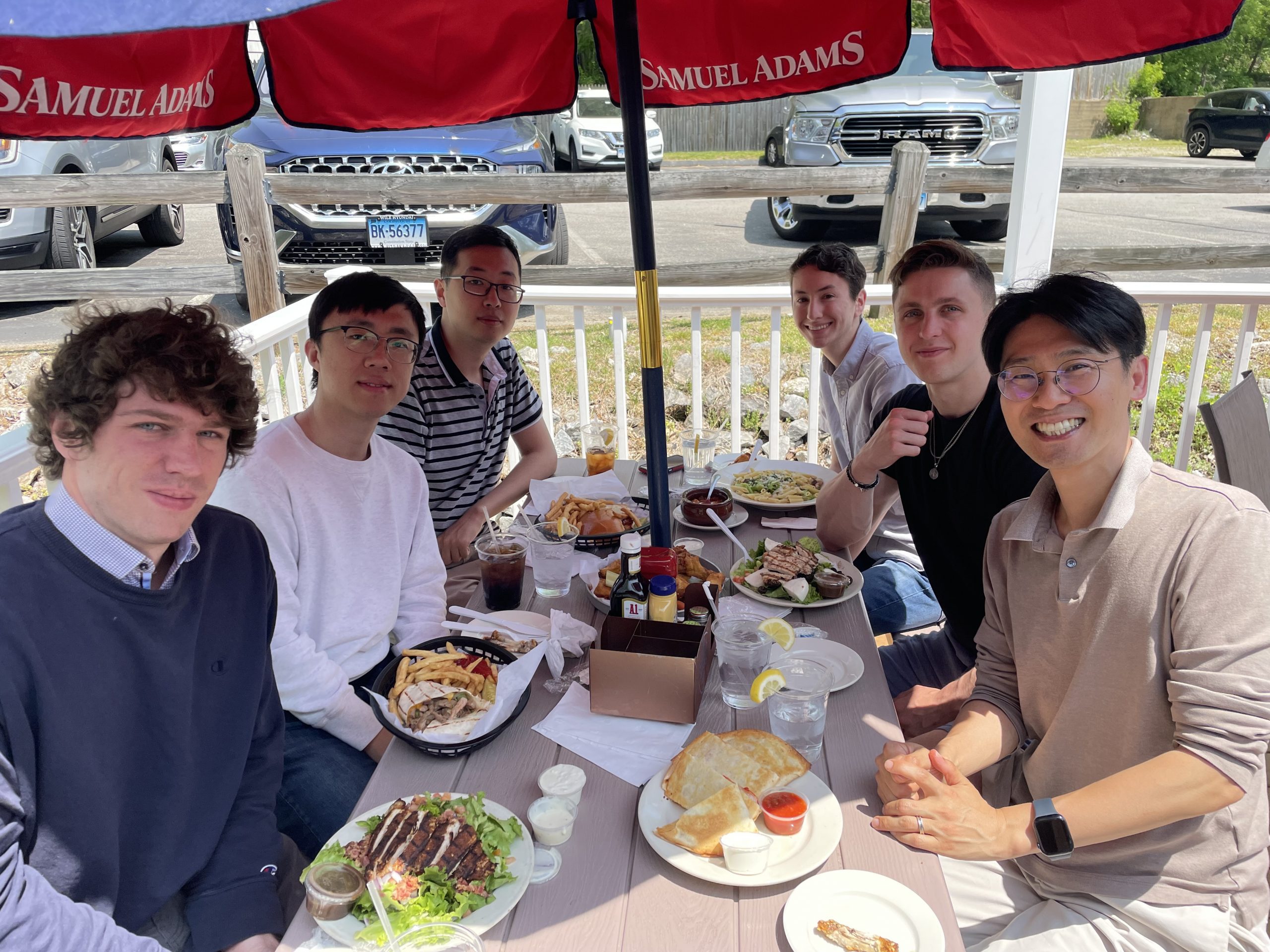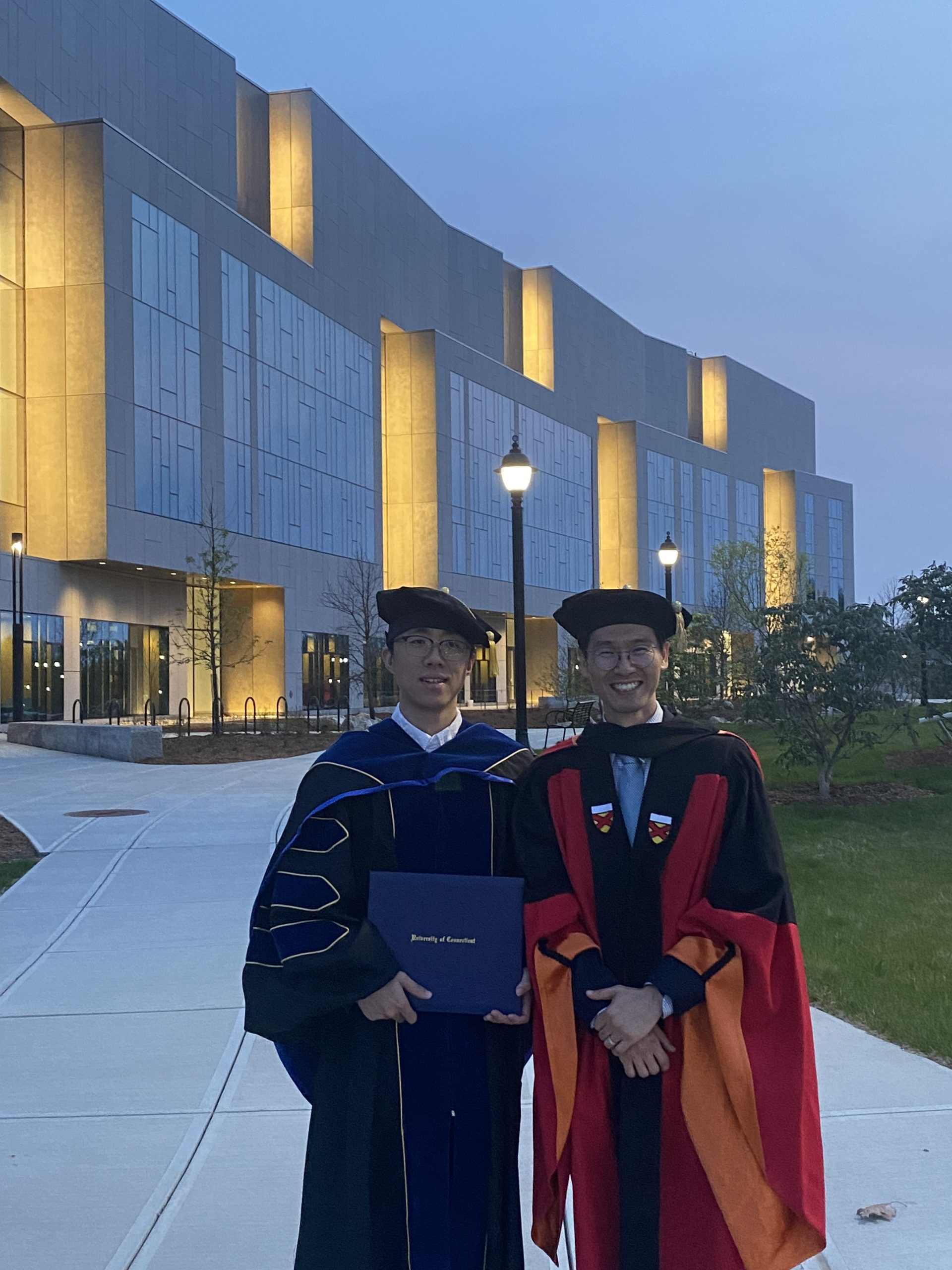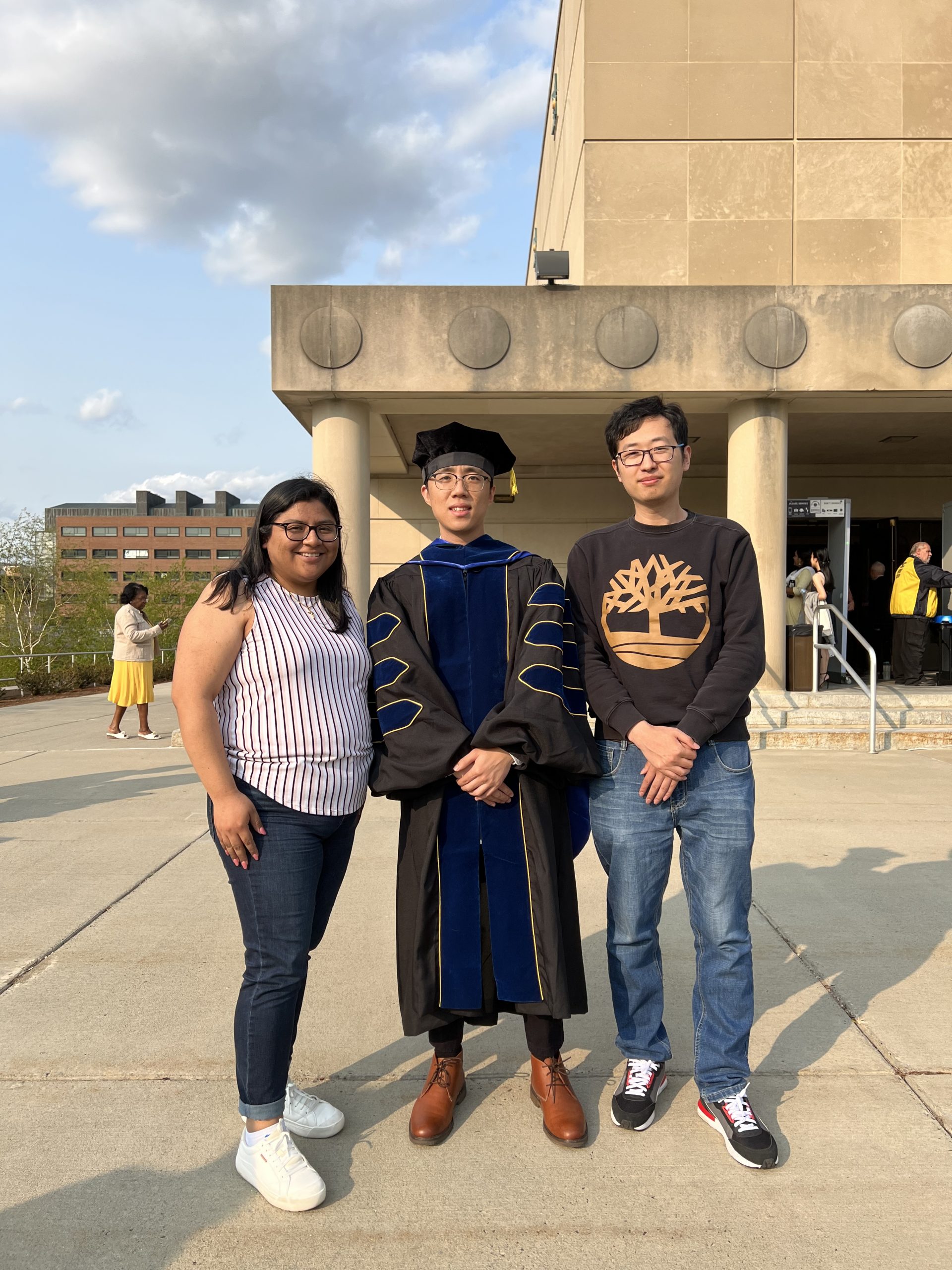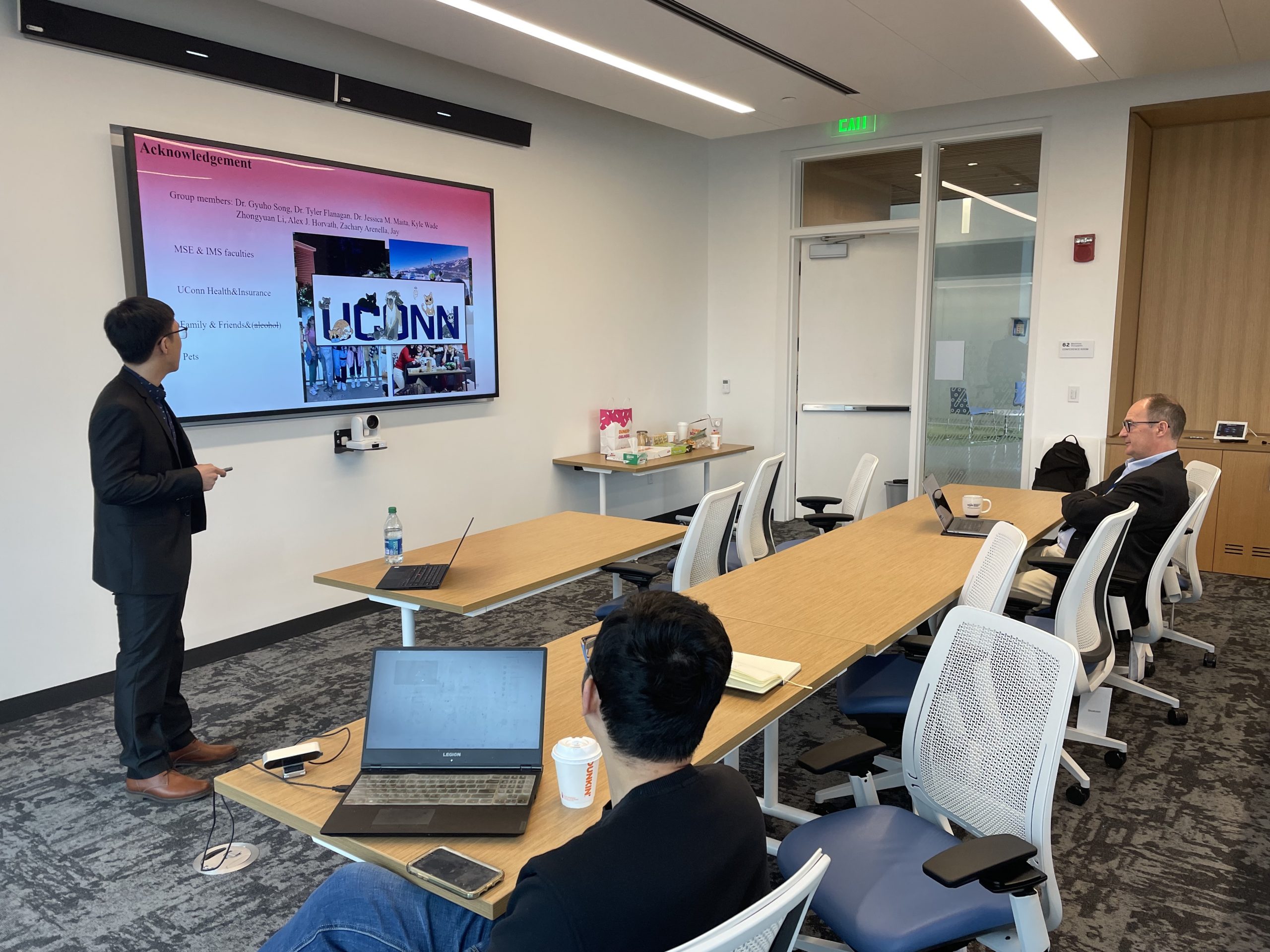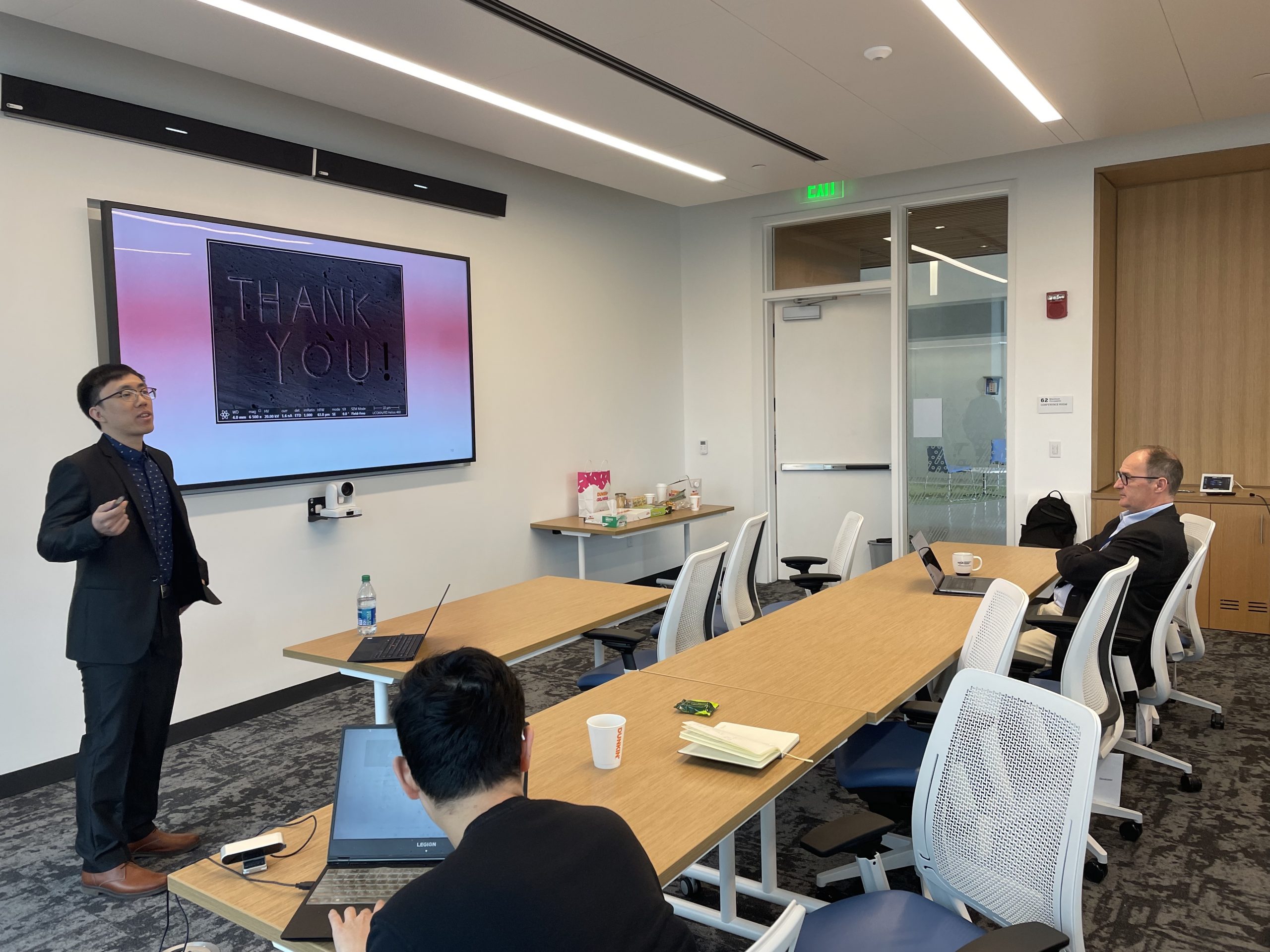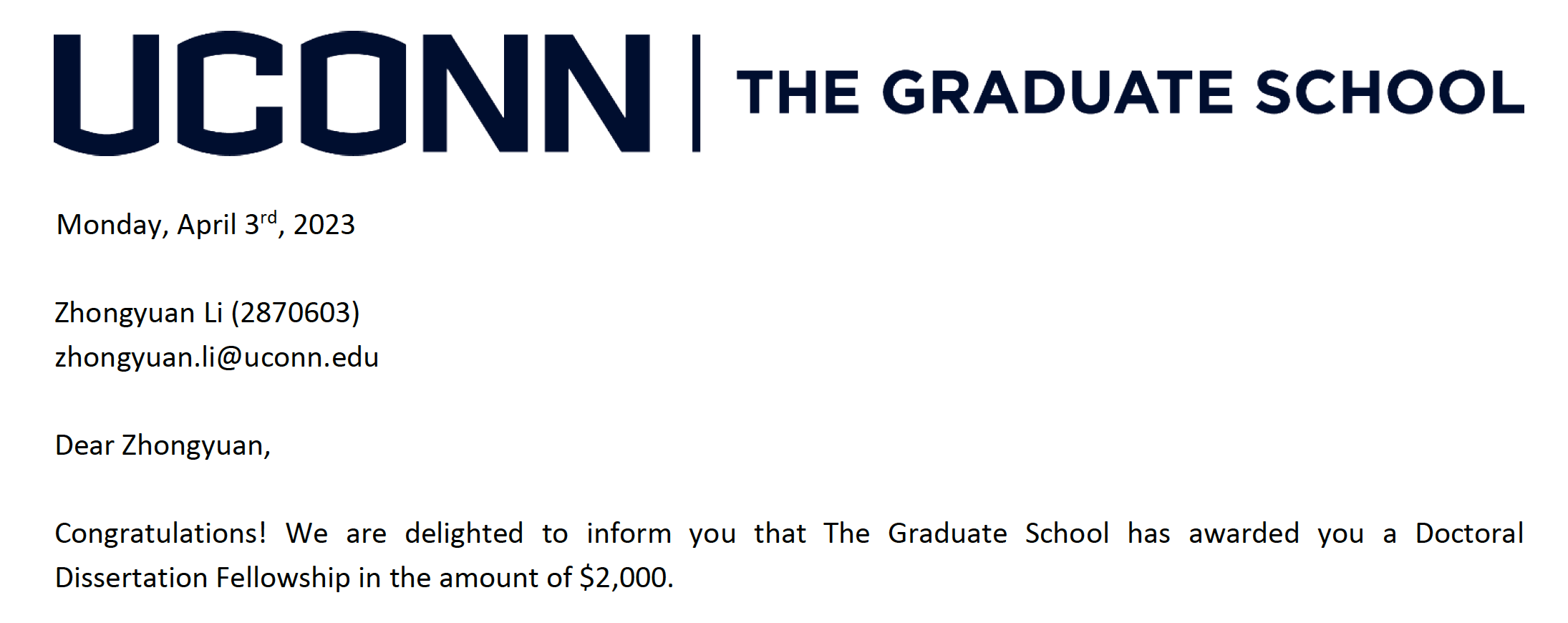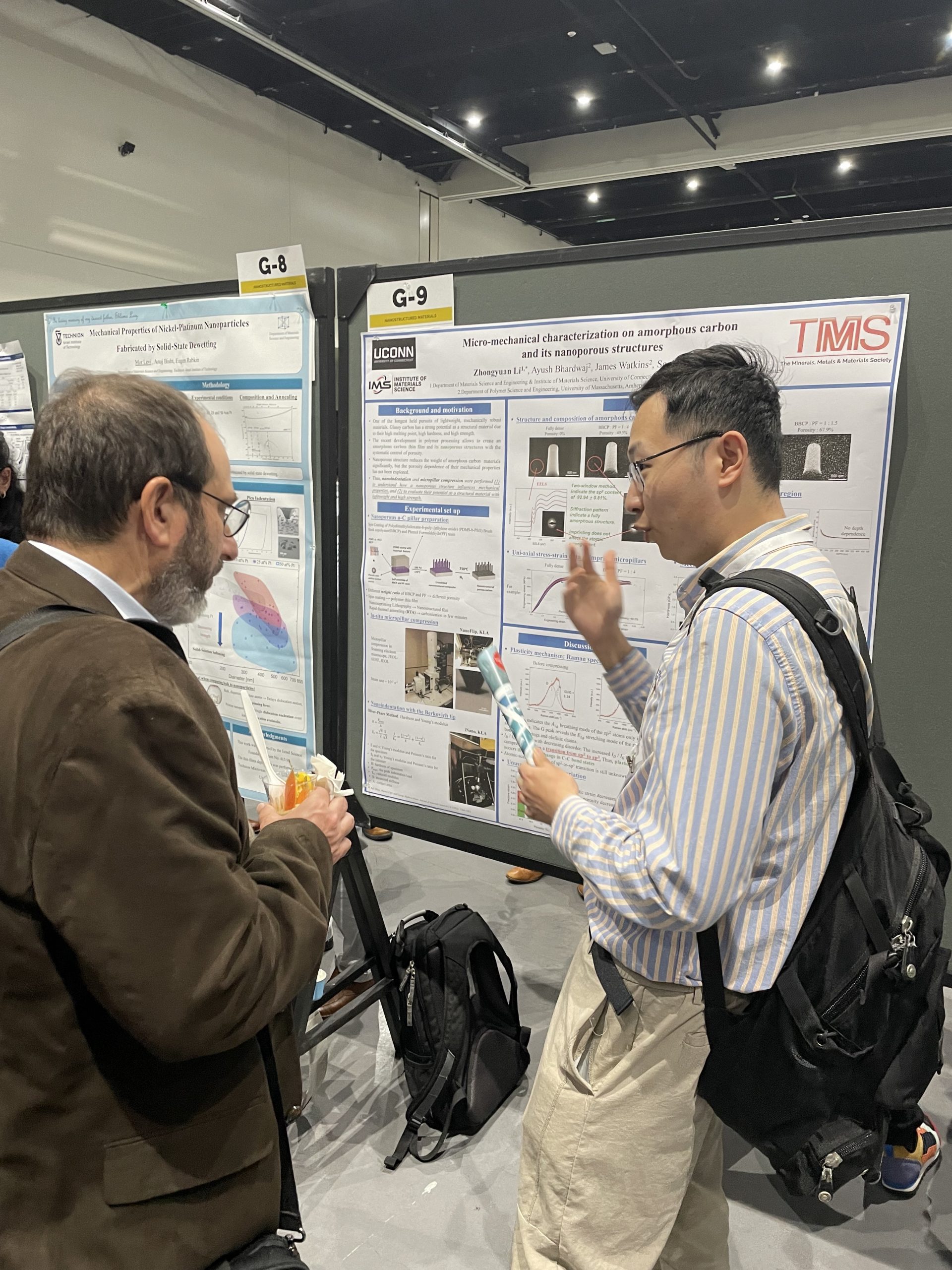Farewell lunch with Shuyang and Jay. We wish both a great success in their next endeavor! Congratulations again on their graduation!
Author: Lee, Seok-Woo
MSE department highlights Tyler’s work at EAG Lab!
Tyler’s work at EAG Lab in Silicon Valley (CA) is highlighted at the MSE Department webpage! Excellent article!
EAG Laboratories Scientist Shares Insight into Nanotechnology Research
Congratulations on Shuyang’s graduation!
Many congratulations on Shuyang’s graduation. Shuyang received PhD degree, and his study focused on fundamental understanding of mechanical behavior of SrNi2P2 intermetallic compound. This material exhibits superplasticity via double lattice collapse and expansion process, and this discovery was published at Nano Letters. Shuyang also studied the temperature effect, the cyclic loading effect, and the solute effect on superplasticity. He also discovered the tension-compression asymmetry in superplasticity mechanism. Due to this asymmetry, SrNi2P2 exhibits relatively large temperature changes during cyclic loading and demonstrates a strong potential as an elastocaloric material!
Shuyang will come back to China and start to work on SiEn integrated circuit Co., Ltd. We hope he makes a great contribution to developing a future semiconductor technology. Many congratulations on all your outstanding achievements at UConn!!!
Congratulations on Jay’s graduation!
Congratulations on Jay’s graduation! Jay received M.S degree and made a significant contribution to fundamental understanding of mechanical behavior of wire-arc-additive-manufactured (WAAM) material. Jay discovered the high solute concentration at dendrite boundaries, and this periodic distribution of solutes lead to the Hall-Petch type behavior. This result is very important for the development of strong WAAM materials. Jay starts their next journey at Collins Aerospace! Good luck!
Zhongyuan’s research is highlighted at the UConn MSE webpage!
Zhongyuan’s research is highlighted at the UConn MSE webpage!
Discovering the Power of Materials Science at UConn: “Material is the foundation of everything.”
Shuyang finished his PhD defense successfully!
Shuyang finished his PhD defense successfully. Many congratulations!
He gave a wonderful presentation on mechanical properties of SrNi2P2 single crystals, which show unusual superplastic behavior via lattice collapse and expansion. He has investigated tension-compression asymmetry, temperature effect, and composition effect.
Title: Mechanical behavior of SrNi2P2 single crystals at small length scales
Committee:
Prof. Seok-Woo Lee (major advisor)
Prof. Mark Aindow
Prof. George Rossetti Jr.
Prof. Rainer Hebert
Prof. Jasna Jankic
Date/Time: Wednesday, April 5, 2023. 10:00 AM
Location: Science One 1002
Abstract: Elastic strain limit, which is the measure of the maximum allowed fractional change in material length before a permanent shape change occurs, is the quantity used to describe the elastic deformability of materials. Superelasticity is the recoverable deformation associated with the reversible structural transition, which often leads to the large maximum recoverable strain. Achieving superelasticity is important for various engineering applications, which require a reliable impact protection, strain engineering, elastocaloric effect, and shape memory effect. In 1985, Hoffmann and Zhang postulated the possibility of forming and breaking Si-type bonds in ThCr2Si2-structured intermetallic compounds under uniaxial deformation along their c-axis, which could lead to superelasticity via the unique reversible structural transition, lattice collapse and expansion, respectively. By reviewing crystallographic data of a wide variety of known ThCr2Si2-structured compounds, SrNi2P2 has been identified as one of the most likely candidates to have a relatively small critical stress of structural transition, which would allow us to observe the structural transition and superelasticity before fracture occurs.
In this study, micro-compression test, micro-tensile test, and nanoindentation were conducted on SrNi2P2 single crystals along c-axis direction and confirmed that superelasticity indeed occurs through the lattice collapse and expansion process that Hoffman and Zhang suggested. This unique structural process enables excellent fatigue resistance and the efficient elastocaloric cooling. The phase diagram in stress-temperature space was also constructed with cryogenic mechanical data. In addition, the critical role of anisotropic residual stress, which could be developed by a doped element, in superelasticity and plasticity has been identified. It is noteworthy to mention that theoretical calculation predicts the presence of ~2500 ThCr2Si2-type intermetallic compounds. Therefore, all the results not only provide a fundamental insight into the understanding of the structure and mechanical properties of SrNi2P2 but also suggest a strong possibility to discover another superelastic ThCr2Si2-type intermetallic compounds. This new class of superelastic materials could be useful for the development of impact-resistant materials for structural applications, cryogenic linear actuators for space engineering, and elastocaloric cooling systems for refrigeration.
Zhongyuan receives the graduate summer fellowship!
Jessica’s spinel paper is published at Acta Materialia! Congrats!
Jessica’s study on mechanical properties of nanocrystalline MgAl2O4 is published at Acta Materialia! Many congratulations! This works used nanoindentation, microvillar compression, and micro-cantilever bending extensively to investigate the grain size effect on hardenss, yield strength, and fracture toughness. The significant improvement in fracture toughness when the grain size becomes smaller than 10.5nm provides a great promise to develop a high toughness ceramic! Wonderful works!
Jessica M. Maita, Sarshad Rommel, Jacob R. Davis, James A. Wollmershauser, Edward P. Gorzkowski, Boris N. Feigelson, Mark Aindow, Seok-Woo Lee, “Grain size dependence of mechanical properties of nanocrystalline magnesium aluminate MgAl2O4,” Acta Materialia, in press (2023) [PDF][web]
Shuyang and Zhongyuan attended the TMS 2023!
Shuyang and Zhongyuan gave a presentation at the TMS 2023 at San Diego, CA!
- Zhongyuan Li: Micro-mechanical characterization on amorphous carbon and its nanoporous structures (Poster Presentation)
- Shuyang Xiao: Multi-stage superelasticity in SrNi2P2 intermetallic compound via lattice collapse and expansion and the influence of cryogenic temperature (Oral presentation)
Zhongyuan’s paper was published at Materials & Design! Congrats!
Zhongyuan’s paper was just published at Materials & Design! Many Congratulations! This work demonstrates how to develop a nano-composite material that can absorb and release the large elastic strain energy.
Zhongyuan Li, Jinlong He, Nikhil Tiwale, Keith J. Dusoe, Chang-Yong Nam, Ying Li, Seok-Woo Lee, “Unraveling the ultrahigh modulus of resilience of sequential-infiltrated core-shell polymer nanocomposite nanopillars,” Materials & Design, 227, 111770 (2023) [PDF][web]
Abstract: Modulus of resilience, the maximum strain energy density that can be stored in an elastically deformed solid, is an important mechanical property for developing artificial muscles in robotics, soft electronics panels, and micro-/nano-electromechanical actuators. In this study, core–shell SU-8 nanocomposites were fabricated via vapor-phase infiltration of nanoscale amorphous aluminum oxides into SU-8 nanopillars and performed transmission electron microscopy, nanomechanical testing, analytical modeling, and atomistic simulations to gain a fundamental insight into the ultrahigh modulus of resilience much higher than that of most high-strength materials. This study shows that the ultrahigh modulus of resilience results from: the low aspect ratio of amorphous aluminum oxide nano-particulates; the particulate size thicker than the free volume size; and the thin aluminum oxide interconnecting links within nano-particulates. These unique microstructural features produce the unusual combination of low specific Young’s modulus, 4 MPa/(kg/m3), and high specific yield strength, 0.2 MPa/(kg/m3), leading to the specific modulus of resilience, 5.21 ± 0.39 kJ/kg about ten times higher than materials with the similar yield strength. This study demonstrates that vapor-phase infiltration is an excellent fabrication method to produce a polymer nanocomposite that can absorb and release a large amount of elastic strain energy.
